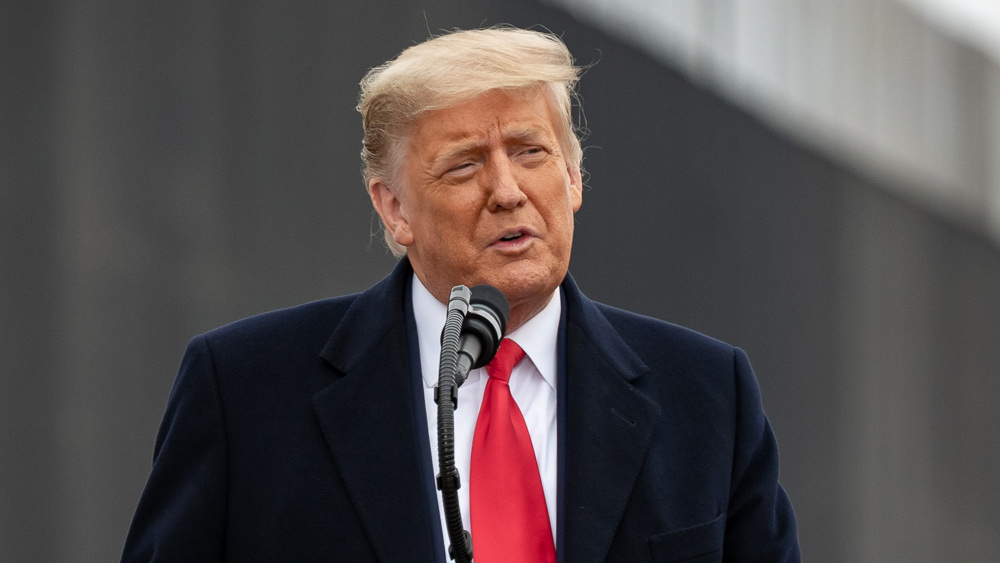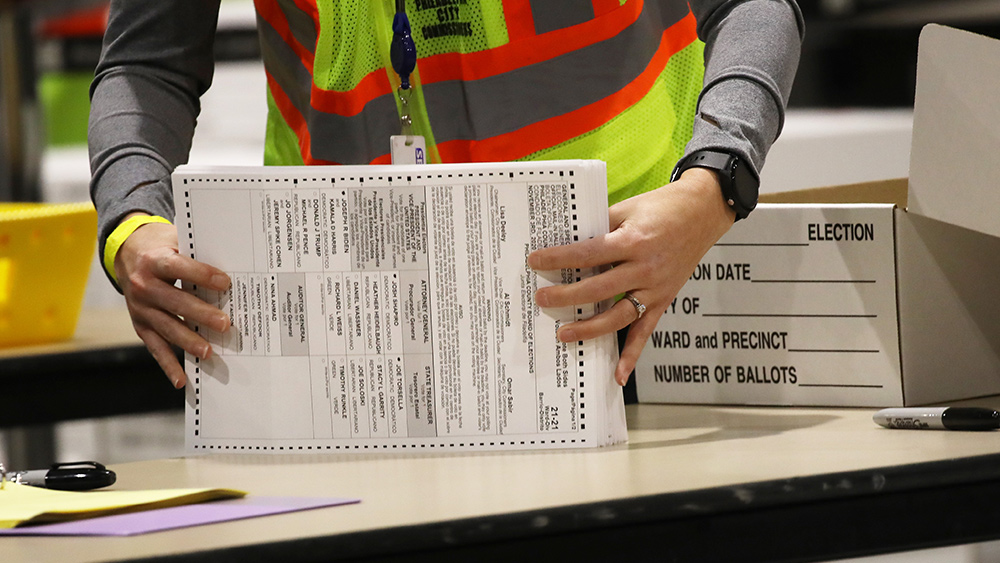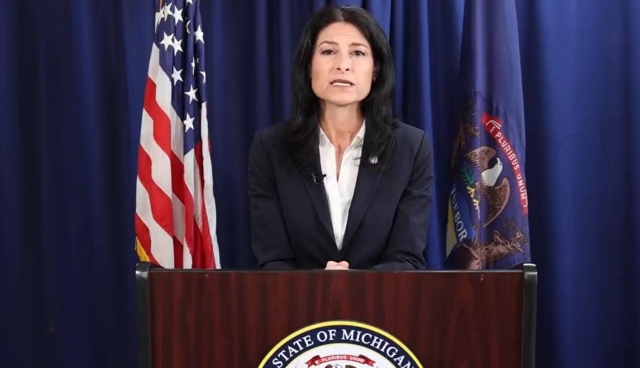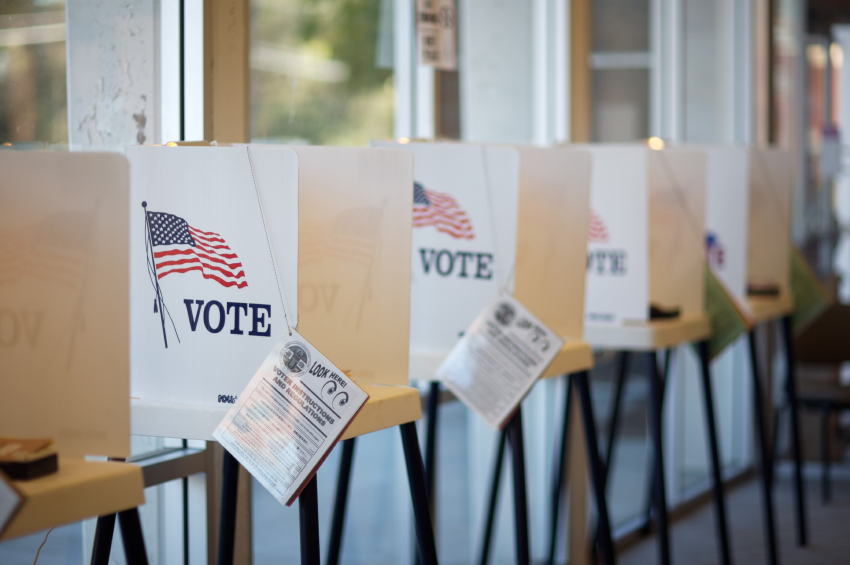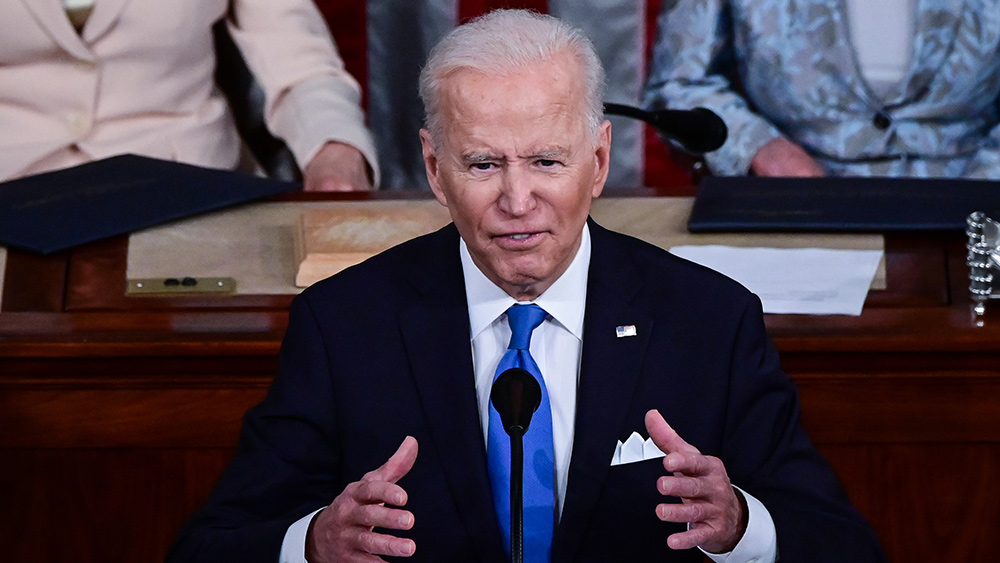
(Article by William Doyle republished from TheAmericanConservative.com)
What happened in 2020 involved a highly coordinated and privately funded “shadow campaign” for Joe Biden that took place within the formal structure of the election system itself. Through the injection of over $419 million of Mark Zuckerberg and Priscilla Chan’s money, laundered through the Center for Technology and Civic Life (CTCL) and the Center for Election Innovation and Research (CEIR), the professional left presided over a targeted, historically unprecedented takeover of government election offices by nominally nonpartisan, but demonstrably ideological, nonprofit organizations and activists in key areas of swing states such as Arizona, Georgia, Michigan, Pennsylvania, and Wisconsin.
What happened in 2020 involved a highly coordinated and privately funded “shadow campaign” for Joe Biden that took place within the formal structure of the election system itself. Through the injection of over $419 million of Mark Zuckerberg and Priscilla Chan’s money, laundered through the Center for Technology and Civic Life (CTCL) and the Center for Election Innovation and Research (CEIR), the professional left presided over a targeted, historically unprecedented takeover of government election offices by nominally nonpartisan, but demonstrably ideological, nonprofit organizations and activists in key areas of swing states such as Arizona, Georgia, Michigan, Pennsylvania, and Wisconsin.
Our research shows that CTCL spending in Wisconsin generated enough votes for Joe Biden to secure him an Electoral College win there in 2020. We estimate that CTCL spending in Wisconsin purchased Joe Biden an additional 65,222votes,without which Donald Trump would have won the state by 44,540 votes.
Although CTCL and CEIR are chartered as non-partisan 501(c)(3) corporations, our research shows that the $419.5 million of CTCL and CEIR spending that took place in 2020 was highly partisan in its distribution, and highly partisan in its effects. Targeted CTCL and CEIR spending played a decisive role in building a “shadow” election system with a built-in structural bias that systematically favored Democratic votes over Republican votes.
Big CTCL and CEIR money had nothing to do with traditional campaign finance, media buys, lobbying, or other costs that are related to increasingly expensive modern elections. Rather, it had to do with financing the infiltration of election offices at the city and county level by Democrat activists and using those offices as a platform to implement preferred administrative practices, voting methods, ballot harvesting efforts, and data sharing agreements, as well as to launch intensive multi-media outreach campaigns and surgically targeted, concierge-level get-out-the-vote efforts in areas heavy with Democratic voters.
The injection of bias into select local election offices through CTCL infiltration introduced structural bias into Wisconsin’s entire 2020 election. This involved favoring certain voters and voting practices over others, and disfavoring other classes of voters and voting practices, giving CTCL’s preferred voters and voting methods an outsized impact on the final election results. The outcome of the 2020 election in Wisconsin is not the outcome that would have occurred if the election had been conducted on the basis of established election laws, equal treatment of voters, and administrative neutrality.
CTCL In Wisconsin: Ground Zero For CTCL’s Nationwide Effort
CTCL’s Safe Elections Project in Wisconsin was not the result of a grass roots clamor for greater election funding among money-starved municipalities desperately seeking additional election funding. It was entirely a top-down endeavor, initiated by CTCL operatives, and funded by a massive inflow of money from Facebook founder Mark Zuckerberg, who cultivated connections among “Wisconsin Five” mayors and other city officials, incentivized the first grant applications, and provided funds and advice to aid in their completion.
CTCL involvement in Wisconsin’s election began in Racine. In late May, CTCL issued a $100,000 grant to the southeast Wisconsin city to “recruit other Wisconsin cities to join the ‘Wisconsin Safe Voting Plan.’” Racine Mayor Cory Mason spoke to his fellow liberal mayors in Madison, Milwaukee, Green Bay, and Kenosha about accepting CTCL’s grants—with the proviso that there would be strings attached.
CTCL authorized the City of Racine to distribute from its initial $100,000 grant, $10,000 to each of the four recruited cities (keeping $10,000 for itself), as an incentive for them to participate with Racine in applying for the larger CTCL conditional grants.
Emails obtained through public records requests show Mason’s office in May 2020 setting up numerous virtual meetings with the four other mayors three months before CTCL publicly announced the first round of grants to the “Wisconsin 5” on July 7, 2020. The Wisconsin Safe Voting Plan, and CTCL involvement in Wisconsin’s election was the culmination of a collaborative effort between CTCL’s activist directors and election officials in Green Bay, Kenosha, Madison, Milwaukee, and Racine. These cities would soon come to be referred to in CTCL inner circles as “The Wisconsin 5.”
At least 10 other cities in areas that were important to Democratic efforts to retake Wisconsin would eventually seek to become part of the plan by applying for and accepting significant CTCL grants considerably in excess of the minimum $5,000 offered to non-urban election offices throughout the state.
CTCL And “The Wisconsin Safe Voting Plan” to Infiltrate Wisconsin’s Election System
The Wisconsin Safe Voting Plan—which would emerge out of a collaboration between high level CTCL Advisors, several representatives of the Pierre Omidyar funded National Vote at Home Institute, and Milwaukee’s City Clerk office during Summer, 2020—was the lynchpin of CTCL’s involvement in Wisconsin’s 2020 election. Fulfilling its major objectives was a condition for CTCL funding. City officials among The Wisconsin 5 signed off on “clawback provisions” that allowed CTCL to reclaim their grant money if it was not used to further the objectives contained in the plan.
For example, the CTCL contract that Green Bay approved warns that the grant was to be used “only for” safe and secure election administration, “and for no other purposes,” which means under the ambitious terms they set forth in their portion of the WSVP. The grant’s clawback provision stated that “CTCL may discontinue, modify, withhold part of, or ask for the return of all or part of the grant funds if it determines, in its sole judgment, that (a) any of the above conditions have not been met or (b) it must do so to comply with applicable laws or regulations.”
How The Wisconsin 5 Sought to Implement CTCL’s Wisconsin Safe Voting Plan: Bonfire of the Inanities
The Wisconsin Safe Voting Plan lists CTCL’s four major strategic objectives.
- First, to “encourage and Increase Absentee Voting (By Mail and Early, In-Person),” mainly through providing “assistance” in absentee ballot completion and submission, and the installation of ballot drop boxes
- Second, to “dramatically expand strategic voter education & outreach efforts, particularly to historically disenfranchised residents.”
- Third, to recruit new election workers, mainly from among paid young activists who would replace the usual, older election day volunteers.
- A distant fourth, both in emphasis and level of funding, was the funding of Covid-19 related safety measures.
CTCL funded election offices in Wisconsin seemed particularly intent on courting a demographic favored by the activists at CTCL—a loosely defined “New American Majority” coalition—to replace the working-class voters who had abandoned the party in droves in 2016, and who formerly made up a significant part of the old Democratic “Blue Wall” in the industrial upper Midwest.
This coalition encompasses people of color, single women, young people, and is often extended to include members of the LGBTQ community. Two of the non-profits most closely affiliated with CTCL, the Voter Participation Center and the Center for Voter Information, are at the forefront of proponents of this electoral strategy. According to Democracy Docket, “In the 2020 election, VPC and CVI overcame unprecedented challenges to help engage voters from the New American Majority.”
Addressing these challenges would involve a large commitment of financial and human resources in Wisconsin. There was therefore considerable anguish expressed in the Wisconsin Safe Voting plan about the “hand holding” level of assistance that such voters required in order to cast valid votes, even under greatly relaxed absentee ballot standards during Covid-19 afflicted 2020. To meet this need, Green Bay, Madison, Milwaukee, and Racine together budgeted over $540 thousand of their CTCL grant money toward various forms of “non-partisan voter education” alone.
The Wisconsin Safe Voting Plan outlined the prodigious efforts that the Wisconsin Five were willing to make in order to bend the election system from within toward these untapped tranches of low-propensity potential Democratic voters, and thereby increase Democratic votes in their cities, and in the statewide totals. Established by officials of the Wisconsin Five in collaboration with CTCL advisors, it would serve as the general template for CTCL’s efforts in other key swing states nationwide. It is an extravagant wish list of far-left Democratic election concerns and priorities.
Some of the highlights:
- Concern was expressed about “voters who, understandably, were completely confused about the timeline and rules for voting in the midst of a pandemic and required considerable public outreach and individual hand-holding to ensure their right to vote.”
- Concerns were also expressed that many targeted Democratic voters would have no idea how to cast absentee ballots. WSVP participants lamented the fact that “countless voters” in their municipalities attempted to submit cell phone “selfies” as valid photo ID. Explaining to them that this was not a valid form of photo ID and instructing them on how to properly submit valid ID “took considerable staff time and resources.”
- Green Bay planned to spend $45,000 to employ bilingual “Voter Navigators” to help residents properly upload valid photo ID, complete their ballots, comply with certification requirements, and offer witness signatures.
- Racine wished to create a small corps of “Voter Ambassadors.” Racine officials said they would use their grants to recruit, train and employ paid Voter Ambassadors who would set up at the City’s community centers to assist voters with all aspects of absentee ballot requests, including photo ID compliance.
- Green Bay allocated funds to install secure drop boxes at the city’s libraries, police community buildings, and potentially several other sites including major grocery stores, gas stations, University of Wisconsin Green Bay, and Northern Wisconsin Technical College, in addition to the one already in use at their City Hall.
- In Madison city officials planned to install one secure drop box for every 15,000 voters, or 12 drop boxes total. Madison also planned to provide a potential absentee ballot witness at each drop box, utilizing social distancing and equipped with PPE.
- City officials from all of The Wisconsin Five sought additional funds “to accommodate those who [either do not] want to vote by mail, or go to the polls on election day or to early vote.” Funds were therefore sought to enable absentee “curbside” and “drive-thru voting,” particularly for those with health concerns who could “remain in their cars and have a virtually contact-less voting process.” Each of the five cities asked for significant resources to expand drive-through “curbside” voting for four weeks prior to election day.
- Madison officials sought $160,000 to provide 18 in-person absentee voting locations for the four weeks leading up to the November election. Madison officials also proposed the use of carts for their ExpressVote ballot marking devices for curbside voting so that the use of ExpressVote could be “normalized” to help voters with disabilities feel “less segregated” during the voting process.
- Green Bay sought to motivate potential voters through a CTCL-funded multi-prong strategy utilizing “every door direct mail,” targeted mail, geo-fencing, billboards, radio, television, and streaming-service PSAs, digital advertising, and automated calls and texts. The City guaranteed that these efforts would be undertaken in English, Spanish, Hmong, and Somali. Additional grant funds to fund voter outreach from within Green Bay’s election office would be “distributed in partnership with key community organizations including churches, educational institutions, and organizations serving African immigrants, LatinX residents, and African Americans.” The total amount that Green Bay sought for this initiative alone was $215,000, or about 64 percent of their entire pre-CTCL election budget.
- Milwaukee wanted to develop a broad-based voter outreach strategy that would appeal “to a variety of communities within Milwaukee, including historically underrepresented communities such as LatinX and African Americans, and would include a specific focus on the re-enfranchisement of voters who are no longer on probation or parole for a felony. Additionally, this campaign would include an edgy but nonpartisan and tasteful communications campaign to harness the current [Black Lives Matter] protests’ emphasis on inequity and ties that message to voting.”
- Racine expressed the desire to obtain funds to purchase “a Mobile Voting Precinct so the City can travel around the City to community centers and strategically chosen partner locations and enable people to vote in this accessible (ADA-compliant), secure, and completely portable polling booth on wheels, an investment that the City [would] be able to use for years to come.”
- Madison planned to launch “a robust and strategic poll worker recruitment effort, focusing on people of color, high school students, and college students” to replace older, experienced poll workers.
- Milwaukee promoted a similar plan to increase staffing by launching a recruitment campaign aimed at “a new generation of election workers to sign up and be involved in their democracy.”
Absentee Ballot Chaos Heavily Favors Joe Biden in 2020
CTCL won Wisconsin for Joe Biden, and they did it mainly with absentee ballots. Covid-19 was used as a pretext in many states to put a moratorium on election integrity laws, guidelines and ballot verification procedures that have been long standing and time tested. The result was chaos, especially in states that suddenly moved from very limited absentee voting toward near universal mail-in voting in a very short period of time, such as Wisconsin.
CTCL’s major objective, as set forth in all their internal documents and grant applications, was to promote absentee voting. This involved getting absentee ballots into the hands of reliably Democratic demographics, showing them how to complete them correctly, convincing them to submit them, and providing as many avenues as possible for those ballots to be returned and counted.
CTCL’s involvement in the 2020 election appears exceedingly complex on the surface, at times requiring a program to keep track of the major players, scandals, and institutional relationships that grew out of the CTCL Safe Elections Project. This aspect of CTCL involvement in Wisconsin has been extensively documented by Mollie Hemingway of the Federalist and M.D. Kittle of the Wisconsin Spotlight, among others.
But all of the resources devoted toward ballot curing, drop boxes, vote navigators, partisan activists infiltrating local election offices, and other voter outreach efforts funded by CTCL were aimed at one ultimate end: Seeding an area heavy with potential Democratic votes with as many absentee ballots as possible, targeting and convincing potential voters to complete them in a legally valid way, and then harvesting and counting the results.
While Democrats knew that the radical move toward near universal absentee balloting in Wisconsin and the chaos that would ensue would probably work in their favor, they could not be sure. This is where CTCL performed an invaluable function that could not have been performed from outside the election system, and why infiltration and the injection of large amounts of funding into local election offices was of such importance.
As Hayden Ludwig of the Capital Research Center, an expert on mail-in voting, told us:
The surge of mail-in ballots due to Covid-19 was one of the 2020 election’s greatest novelties and the key to how the election was manipulated in favor of Joe Biden.
Democratic leadership came together behind vote-by-mail in early 2020 as their best shot at overcoming voters’ Covid fears and defeating Trump, in large part because of pressure from election activist groups, such as the National Vote At Home Institute.
The resulting tsunami of mail-in ballots created unprecedented security and chain-of-custody problems in states where vote-by-mail has never been tried on this scale. It strained the U.S. Postal Service’s ability to deliver mail-in ballots both to voters and vote-counters on-time.
It also stressed the budgets of local elections offices, requiring additional personnel and ballot-counting machines even as Covid-19 restricted working conditions. Without a surefire way to get these mail-in ballots first into voters’ hands, and second into ballot-counters’ hands, the Left could not have been confident the outcome would have significantly helped Biden. This is where CTCL proved essential.
A large part of CTCL’s grants paid for private ballot collection bins outside of USPS’s jurisdiction and with questionable oversight. CTCL also funded additional poll workers and vote-by-mail equipment to count incoming ballots, favoring large, Democratic-leaning cities in battleground states.
Read more at: TheAmericanConservative.com
Please contact us for more information.
















